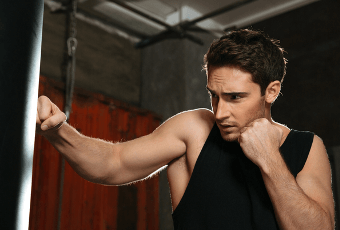Online Film School Free » Film Editing Course » Continuity Editing Techniques
Continuity Editing - Your Complete Guide
Table of Contents
ToggleVideo editing has evolved a lot since “The Great Train Robbery” (1903) and the theories and opinions about the part that video editing is taking in filmmaking art has evolved too. Basically, we can agree that the video editor’s main job is to attach together using a number of shots in order to create continuity in the film that does not draw attention to the video editing itself and continuity editing is an excellent tool for that.
In this article, we’ll talk about what is continuity in film and in editing. what types of continuity are there in films, and I will introduce you to some impressive continuity editing techniques.
What is Continuity Editing?
Continuity editing is a part of film grammar. Some call it a technique, but I’m not sure it’s the right term. The definition is a film technique of combining two shots (or more) in a way that is almost invisible to the viewer. It is made by keeping the elements of each shot consistent. That may look obvious for us now, but it took time for video editors to understand it.
The continuity needs to be in :
- The setting and space (subject positions, framing)
- Action
- Eye line of the characters
Continuity in lighting, for example, means that the colors and lights in the different shots are the same. The editor’s job is to do whatever it takes to fix the discontinuity elements. In this case, the editor may need to do some color correction to fix the problem. Let’s talk about those elements for a second.
The setting and space
The art in the scene needs to be the same through all the shots. If a bottle of wine in the first shot is half empty and in the next shot it’s full, we have a discontinuity.
The Action
When a character starts an action in the first shot, the next shot will pick up from where the action in the former shot ended. It is also recommended to pay attention to how the character is standing or sitting in both shots.
Eye Line
The direction that the actors are looking at will guide the audience’s eyes. If we want the actors to create an illusion that they are talking to each other, each one of them needs to look in the right direction. In the Cinematography for Directors course, we have a few lessons that talk about that, but basically, if one actor look to the right of the camera, the other one needs to look to the left of the camera in order for them to look as if they are talking with each other. It’s the video editor’s job to fix it if they don’t do it.
Why Doesn’t the Director or Producer Take Care for the Continuity in Film?
You never shoot the film in the order of the script. Even inside the scene, the order of the shooting is determined by location limitations, the actor’s schedule, etc. Since the shots are not shot in the order of the story, the chances of discontinuity between the shots are big. There will usually be a script supervisor that will watch out for these things, but mistakes always happen. it’s really hard to pay attention to everything that changes in the scene.
Make it a ritual before starting to edit a scene to look for discontinuity possibilities and the way to fix them, and when you finish editing the scene, look for them again. For example, if a character is facing right and on the next shot it is facing left, you can fix it with a flop effect (an effect that changes the direction of the frame). If there is a discontinuity in the actor’s action or an object in the scene, a good solution can also be putting the third shot in between the problematic two if it’s possible.
Other problems that can cause discontinuity can be in backgrounds, sound, and the most “popular” mistake – a discontinuity in object placement. For example, when one of the characters is smoking a cigar and the size of the cigar changes on the different take (first it’s long, then it’s short and then long again).
Another good example can be when an actor is holding a glass on the right hand and on the next take he is holding it on the left. In this online film editing course, we cover many editing techniques and in this lesson, we’ll learn techniques that can help you cover the discontinuity and we’ll go over them in this lesson
4 Editing Techniques to take your Continuity to the next level
- The Matching on Action Technique –Also known as Cutting on action. I recommend reading the article that is linked here to understand this technique better, but basically, it means you are cutting between two shots in the middle of an action. Our eyes are always fixed on where there is action, so when you cut on action, that helps to cover any discontinuity in the shot. What’s important here to remember is that when you do the cut in action, there should be a continuity in action itself.

- The Diegetic sound Technique –Using a sound design in the background that will go through the cut, can help for continuity editing. The diegetic sound should come from the scene’s world, the sound source can be visible on the screen, or it can be an of-screen sound. Sometimes, merely using room-tone can do the job. The most known example is character dialogue – One character is talking, and while she keeps talking, the camera moves to the other character, while the sound of the talking character is still on. What’s important to remember here is not to use the dietetic sound just to cover discontinuity, it should also take part in the overall message of the scene.
- Using the Establishing Shot – Also known as the Master Scene Techniqueץ
It’s an establishing shot is a long shot that we are usually using at the beginning of a scene to establish the scene as it helps us to establish all the information we need about the scene. If we have a problem attaching two shots, we can insert the establishing shot between them.
- The Actor’s Performance – If the actor’s performance is good enough, the discontinuity would not be noticed. Check out the “Over Dose Scene” in the movie Pulp Fiction, there is a scene where John Travolta needs to stick a needle in Uma Thurman’s chest. There is a red mark on the close up of the chest, but the red mark is gone when she gets up with the needle in her chest. The scene is full of energy, it uses a very smart cutting on action technique and the actors give such an excellent performance that it is not noticeable. Check this continuity editing example to understand what I’m talking about
The important thing to remember from this lesson is that your main goal as a video editor is not to get an edited film that is continuous, but that is dramatically effective. continuity editing is just a tool that will help you get there.



